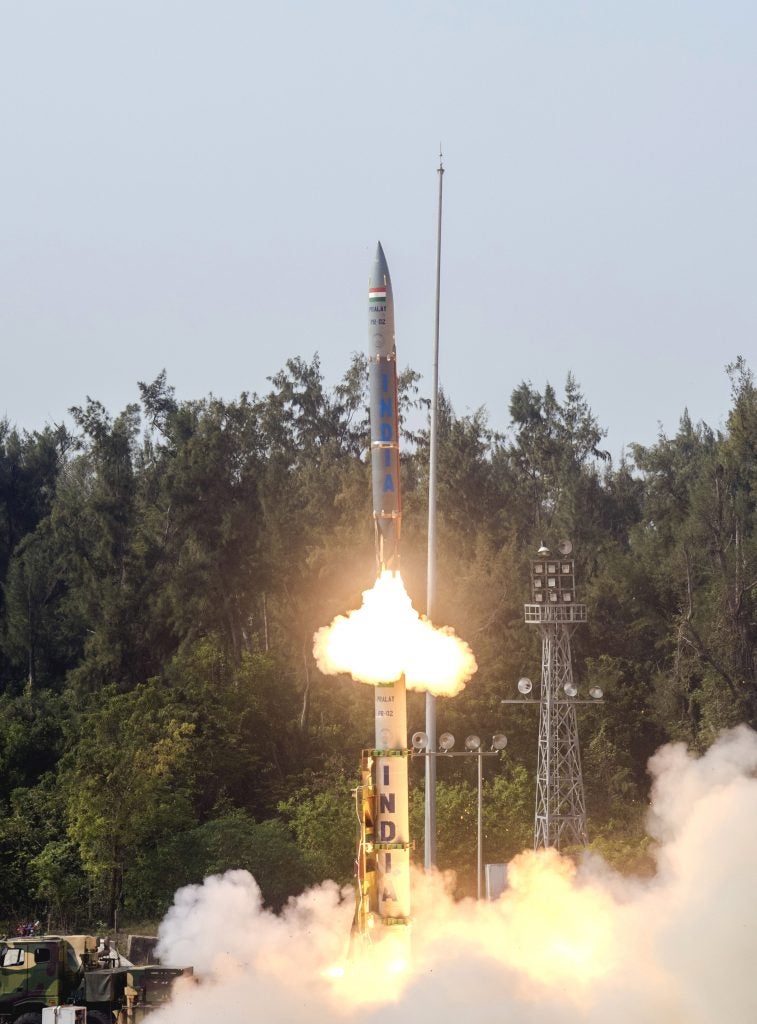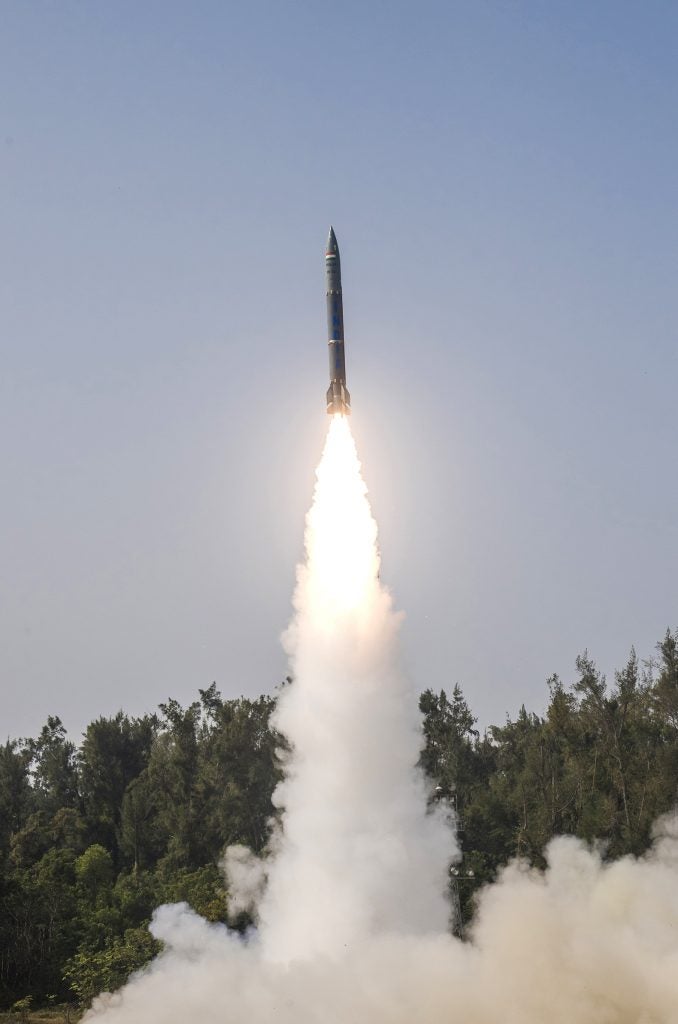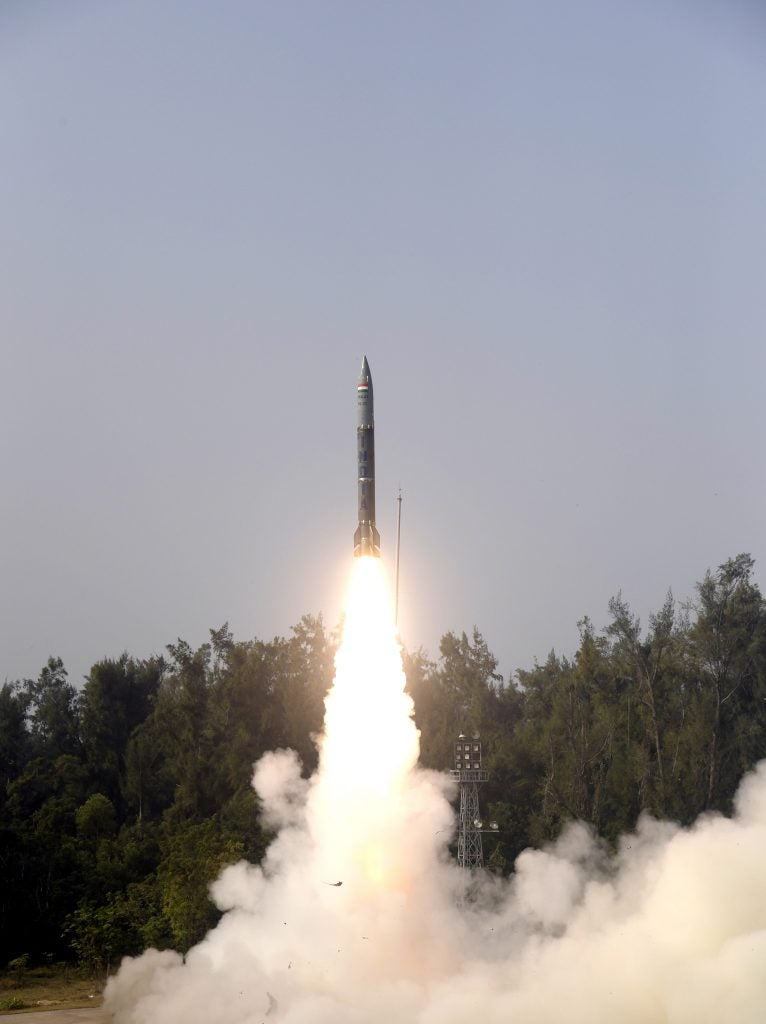India Conducts Two Consecutive Tests Of New ‘Pralay’ Ballistic Missile
India’s Defence Research and Development Organisation (DRDO) successfully conducted two flight tests of the Pralay conventional surface-to-surface missile on December 22 and 23, 2021. This is the first time that India has conducted two flight tests of a ballistic missile successfully on two consecutive days. Both tests reportedly met all mission objectives.
Pralay is a new quasi ballistic missile with a range of 150 – 500km. The test on December 22 was the first ever test of the missile. The missile is powered with a solid propellant rocket motor and is launched from a truck based mobile launcher. The launches were conducted from Dr APJ Abdul Kalam Island in the Bay of Bengal.
Pralay has a diameter of 0.74m which is similar to the K-15 submarine launched ballistic missile (SLBM) and its land-based counterpart, Shaurya. However, unlike those two strategic missiles from which it is developed, Pralay has a stated non-nuclear role. The recently tested SMART system is also derived from the Shaurya/K-15. Pralay weighs over 5 tons and has jet vane control for maneuvering.

In the second test, the Pralay missile was tested for a heavier payload and different range. The maximum range of 500km is obtained with a lower payload of 350kg, while a higher payload option of 700kg is also known. Three known warhead options are available for Pralay: Pre-fragmented (PF), Penetration with Blast (PCB) and Runway Denial Penetration Sub-munition (RDPS). The PF warheads come in two weight classes: a 370kg version with 175kg of explosive content and a 700kg warhead with 385kg of explosives. They contain 51,500 and 83,500 tungsten-based fragments respectively and are used against soft skinned vehicles, radars, troops and more. RDPS is a 350kg warhead designed to destroy runways with a load classification number (LCN) of 60. It consists of 10 sub-munitions, released at a height of 750m at missile terminal velocity of under Mach 1.7. The PCB warhead would be used to attack hardened targets. Pralay will also be equipped with a W band millimeter wave (MMW) seeker, housed in a fused silica radome.

Pralay will be inducted into the Indian Army once it clears all trials. It will become the longest range strike option available to the Army. The longest range missile currently in Indian Army service is the Brahmos supersonic cruise missile with a range of 300km. Pralay would be complemented by the Prahaar tactical ballistic missile, its range being enhanced to 200km. India is also considering raising an Integrated Rocket Force, which would have operational control over these missiles. The twin Pralay tests add to the large tally of Indian missile tests this month, details of which can be read here at Overt Defense.

